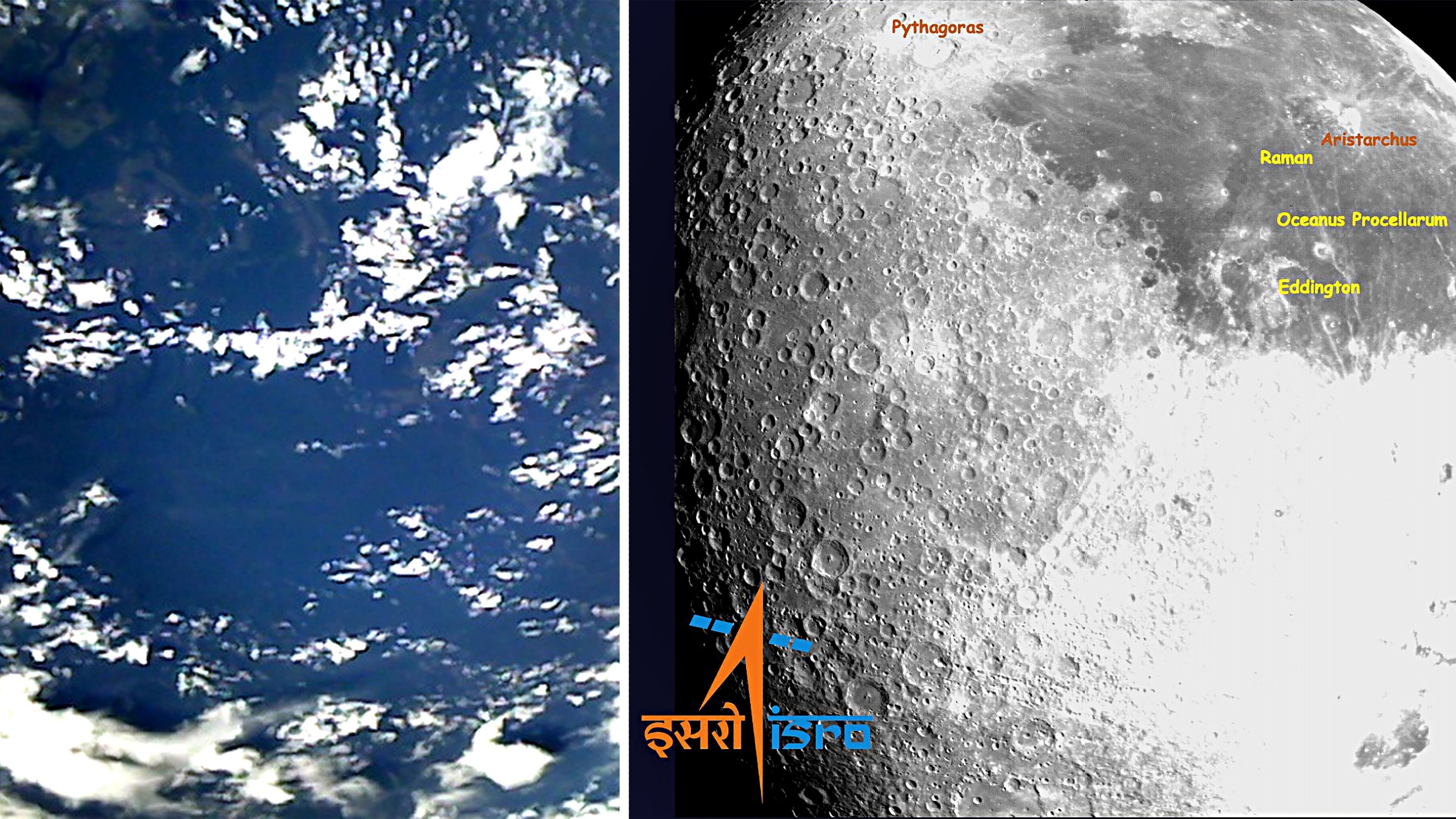
(Left to Right) Earth as viewed by lander imager (LI) camera onboard 'Chandrayaan-3' on the day of the launch, July 14, 2023, and Moon as viewed by lander horizontal velocity camera (LHVC) onboard 'Chandrayaan-3', 'Chandrayaan-3', a day after the Lunar Orbit Insertion, August 6, 2023.
Credit: PTI Photo
As Chandrayaan-3 moves closer to the moon and as lunar exploration generates renewed global interest, the Indian Space Research Organisation (Isro) has undertaken a detailed assessment of the current space situation around the moon.
Isro said the assessment was done against the backdrop of “more intensified activities” around the moon over the next few years, that include the ARTEMIS missions.
Future missions are likely to go beyond scientific exploration and involve resource utilisation for commercial purposes.
A better understanding of the environment will help avoid close-approach threats in planetary orbits, Isro said.
Detailing diverse aspects of traffic around the moon, the space agency noted that as of July 2023, there are six active lunar orbiters – ARTEMIS P1 and ARTEMIS P2, Lunar Reconnaissance Orbiter (LRO), and Capstone, all from Nasa, Isro’s Chandrayaan-2, and Korea Pathfinder Lunar Orbiter (KPLO).
The Japanese spacecraft Ouna, placed in lunar orbit in 2009, and Chandrayaan-1 launched in 2008, are the two defunct spacecraft.
Russia’s Luna-25, with a lander and a rover, is expected to be in a 100-km lunar orbit by August 16 and landing on the moon’s south pole by August 21-23. Chandrayaan-3 is scheduled for landing on August 23.
Isro highlighted 11 upcoming missions to the moon as part of the assessment, including Lunar Trailblazer (USA, 2023), China’s Lunar Exploration Programme (2024-2027) and Lunar Polar Exploration Mission (India/Japan, after 2024).
Though there are only a handful of orbiting spacecraft, frequent conjunctions make collision avoidance manoeuvres necessary. Till July 2023, Chandrayaan-2 – launched in 2019 – has performed three such manoeuvres to mitigate critical close approaches with LRO and KPLO, Isro said.
“For Chandrayaan-3, the propulsion module is expected to orbit around the moon in a circular LLO (low lunar orbit) of about 150 km altitude, for many years to come. The majority of the lunar landers are also likely to temporarily reside in LLO (typically for a few days or weeks) before landing,” the space agency said.
Critical analyses of each of the lunar-bound, orbit-lowering manoeuvres are also being performed to assess potential risks of close approaches with the other lunar orbiters.